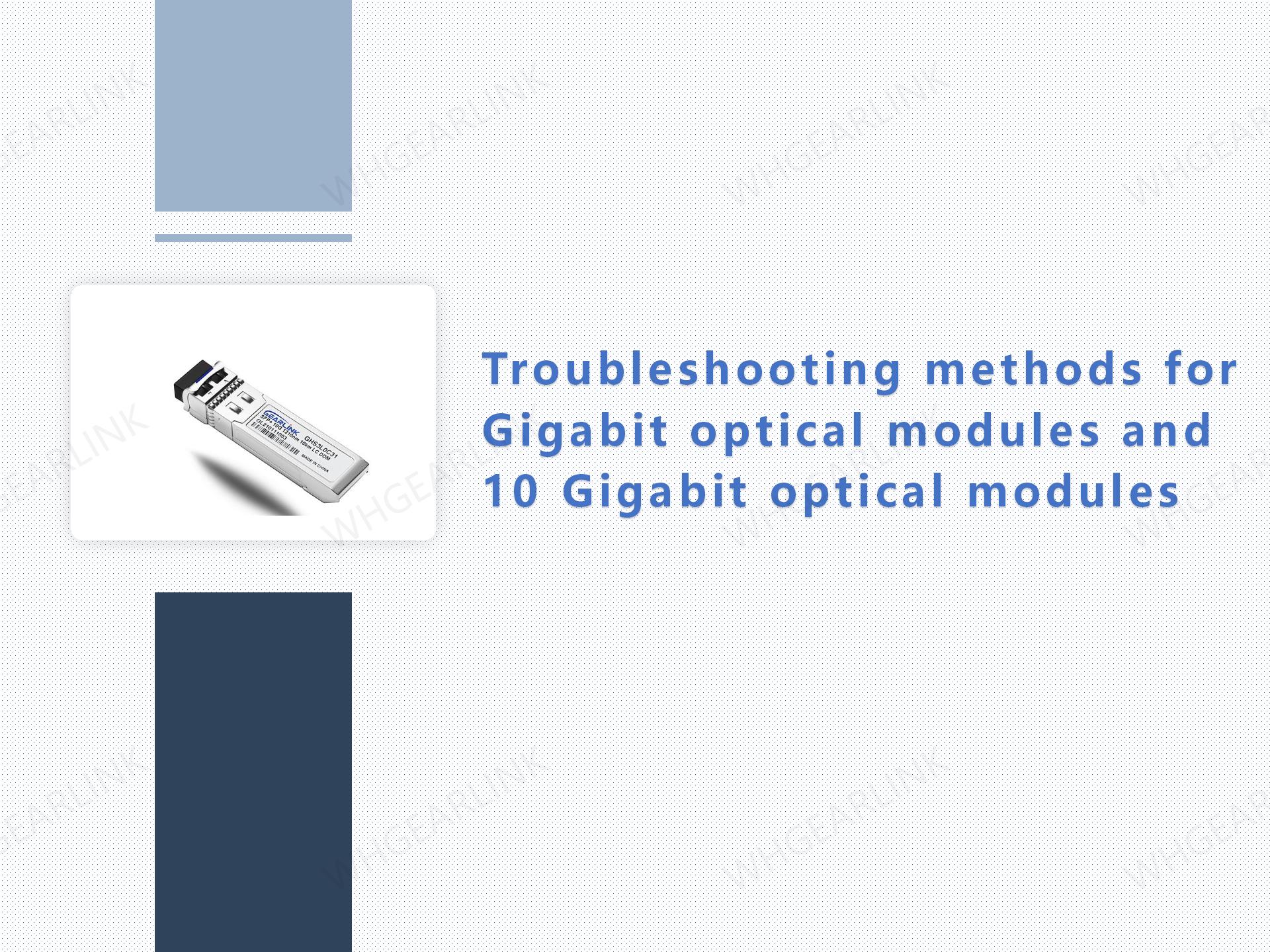Gigabit optical transceivers and 10 Gigabit optical transceivers are an essential part of modern network communication, but they will inevitably encounter some failures during use. This article will introduce you to the common causes and troubleshooting methods of Gigabit and 10 Gigabit optical transceiver failures, aiming to provide readers with better network communication experience and maintenance.
In building a modern network, optical transceivers are essential equipment, among which Gigabit optical transceivers and 10 Gigabit optical transceivers are popular because of their high-speed and stable transmission rates and wide applicability. But in the process of use, the failure of the optical transceiver is a common problem, which not only affects the quality of the network, but may also cause network interruption. The following are the precautions for the use of Gigabit optical transceivers and 10 Gigabit optical transceivers, some common fault causes, and corresponding troubleshooting methods and solutions.
Avoid damage
optical transceivers need to be carefully installed and stored, avoid throwing, exposure to dust and high humidity environment. Avoid electrostatic damage and photoelectric device failure.
Avoid excessive temperature
The optical transceiver is sensitive to temperature. Please check the operating temperature range in the data sheet before use, such as commercial grade, extended grade, and industrial grade, and ensure that the optical transceiver is used within the specified temperature range.
Ensure correct plugging and unplugging
The optical transceiver needs to be plugged and unplugged correctly when in use, and avoid using excessive force to forcibly connect or disconnect. Correct connection angles and sockets should be used to avoid damage to optical transceivers or connectors.
Fiber connection problems
The failure of the optical transceiver may be caused by loose, dirty or damaged fiber connections. This may cause an interruption in signal transmission or a drop in light intensity.
Power supply problem
The power supply of the optical transceiver is unstable or the power cable is loose, which may cause the optical transceiver to not work normally or cannot be recognized.
Physical damage
Physical damage to the optical transceiver, such as scratches or impacts, may cause performance degradation or malfunction of the optical transceiver.
Check the optical fiber connection
Check whether the optical fiber connection is firm, and ensure that the optical fiber connector is not loose or contaminated. Fibers can be replugged and connectors cleaned if needed.
Check the power supply
Make sure the power cable of the optical transceiver is firmly connected and the power supply is normal. If there is a problem with the power supply, you can try replacing the power cord or checking the electrical outlet.
Check for physical damage
Check whether there are scratches or impact marks on the surface of the optical transceiver. If damaged, the optical transceiver may need to be replaced.
Use test equipment for fault diagnosis
If the above troubleshooting methods cannot solve the problem, you can use professional optical fiber test equipment (such as optical power meter, oscilloscope, etc.) to test and diagnose the optical transceiver to determine the specific cause of the fault.
Replace the optical transceiver
If the fault cannot be solved after the above troubleshooting, the optical transceiver may need to be replaced. Make sure to use compatible, tested and certified optics.
Gigabit optical transceivers and 10 Gigabit optical transceivers are indispensable components of modern network communications. Despite their speed and reliability, they still carry the risk of failure. When using and installing optical transceivers, please operate in a standardized manner. If a fault is encountered, factors such as fiber optic connections, power supply, and physical damage need to be carefully checked during the troubleshooting phase. If the problem still exists, you can use professional testing equipment to diagnose the optical transceiver. For irreparable faults, it may be necessary to replace the optical transceiver, and make sure to use the optical transceiver that meets the specifications and quality requirements.


